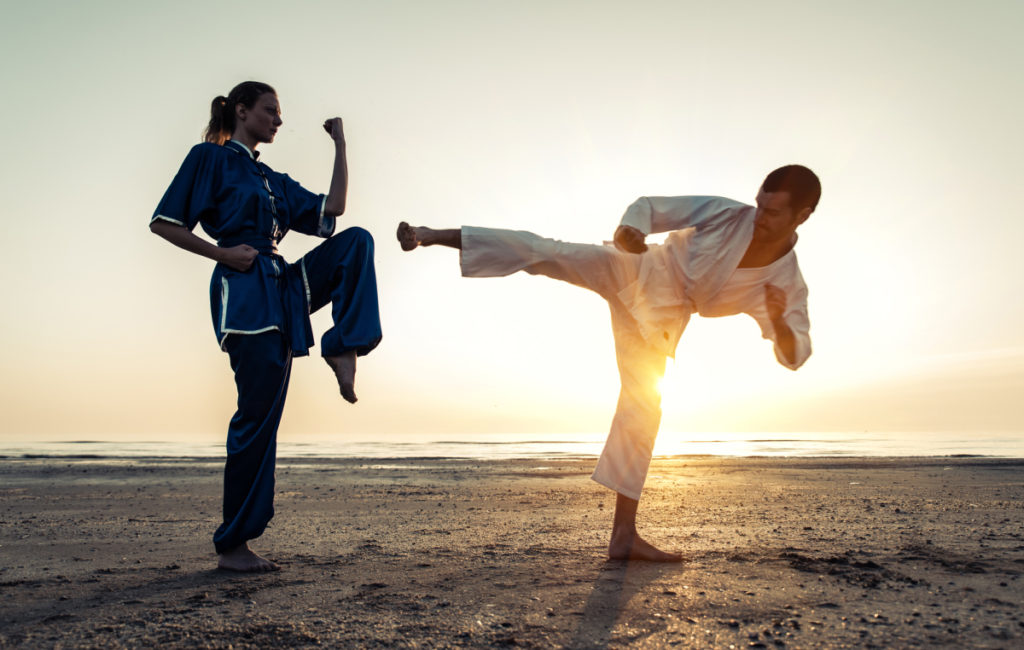The martial arts of the East are, first of all, a unique culture. The combat practice in it is transformed and exalted thanks to the phenomenon of art, which is the fruit of high skill, inspired by beauty. This beauty is inherent everywhere: in meditative observation of candles, in breathing exercises, in listening to music, in a relaxing therapeutic massage. It is also there, in the list of massage therapist resume skills, you will notice the invisible presence of Eastern wisdom. After all, Reiki healing system indicated in this sample resume is also based on the principles of martial arts. And this case is not an exception, but rather a rule. If you carefully look at other resume samples on the website https://resumesbot.com/ thought it seem to be rather casual part of life, you will see how the Eastern tradition has firmly established itself in the life of each individual.
One of the most remarkable and specific signs of the aesthetic principle in martial arts is to combine the seemingly incompatible – spiritualized beauty and harmony with the harsh reality of the combat action.
The aesthetics of the Far Eastern martial arts appears in its purest form. It is maintained thanks to the preservation of diverse ties with “peaceful” arts – the main carriers of the beautiful: music, choreography, theater, and a traditional circus. In another case, the aesthetic gets a completely unusual, sometimes paradoxical expression, for example, the aestheticization of death in the suicide rite of Japanese samurai.
Eastern Wisdom Basics
For a long period, the development of Chinese society, its philosophical thought, went in a certain isolation from other countries of the world and detachment from the latest achievements of world science. To the higher knowledge, Chinese wisdom includes the rules and art of governing the country. Ethics, politics, principles of upbringing and self-improvement of a person are highlighted. Knowledge is evaluated, first of all, as a path to moral perfection. The Chinese people created their original system of views not only on nature and human society, but also on culture. We illustrate this with the example of oriental martial arts.
Currently, the martial arts of the East are widely cultivated abroad, including most countries of Eastern Europe. For the West, Far Eastern martial arts are a complex, multifaceted phenomenon, its assessments are ambiguous:
- The first option. On the one hand, experts pay attention to the vitality of the tradition, its extraordinary adaptability to different socio-historical and cultural conditions, including Western civilization.
- The second option. On the other hand, they note that, penetrating the West, adapting to new conditions, the Far Eastern martial arts lose their original integrity.

The role of music in martial arts training is crucial. Instrumental accompaniment helped to rhythmize and harmonize the training process, freeing the students’ consciousness and stimulating physiological and mental activity. Dance elements, closely intertwined with elements of technology, helped to develop naturalness, plastic beauty of movements.
Masters have long attached great importance to music. Communicating with this art, controlling movement and time, restructuring consciousness, awakening intuition, relieving tension and strengthening the spirit, was highly appreciated in the East. It was an integral part of the psychological preparation of the fighters, also introducing a much-needed aesthetic stream into hard everyday work.
Revealing Primal Nature
Paradoxically, the highest meaning of culture in the East was seen in the peculiar return of society and man to primal “natural purity”. In essence, this was the strategic task of regulating and harmonizing human life on the path of cultural development. In China, for example, such a problem was solved in various ways by the main ideological trends. Confucianism, Taoism and Buddhism entered into a debate only regarding the ways and means of achieving a universally valid ideal. As a result, the aesthetic principle fills the whole world that a person comes into contact with, assimilated by various forms of perception: sensual, intellectual, as well as “supersensible” (more precisely, meditative).
The martial arts tradition has the same aesthetic “aura”. Here, the process of aesthetization is born through the symbolic conventions of the ritual and the traditional canons of art, through imitation of living beings, elements, and other natural phenomena. But imitation took place and was fixed in strictly canonized and ritualized forms. Without this, transmission of tradition would not have been possible.
